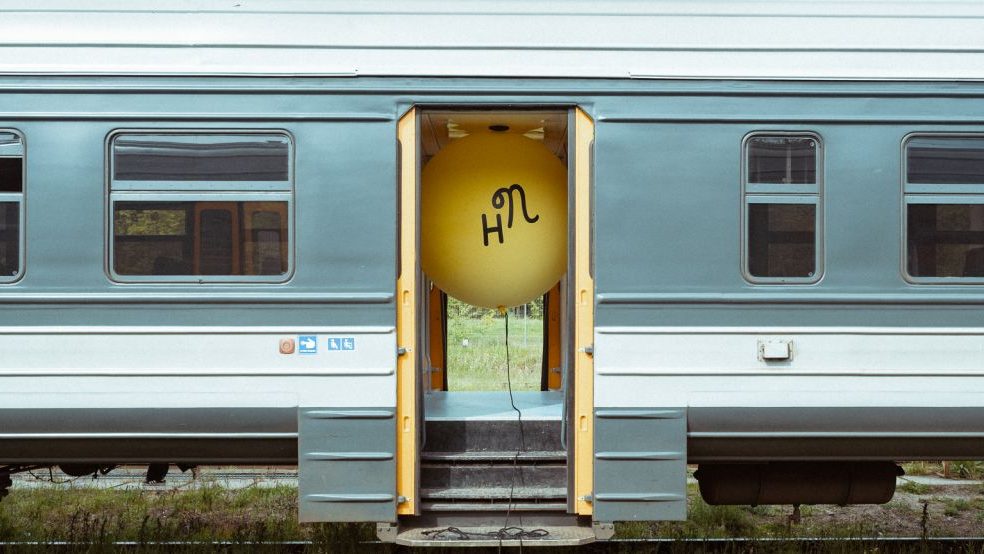Announcing the first events of the Homo Novus anniversary programme

This year, the International Festival of Contemporary Theatre Homo Novus will take place from September 3 to 13, and in its 30th anniversary year, it will captivate audiences not only in Riga and Valmiera, but will also return to the festival’s very first location – Daugavpils. As usual, the festival’s performances will focus on topics that we do not think about in our daily lives or are afraid to think about. This will require trust and the vital willingness to let go. The festival will also feature several surprises worthy of this anniversary.
“In its anniversary year, Homo Novus encourages reflection on the meaning of independent theatre, culture, and art, as well as their precarious and temporary nature as a prerequisite for change. The performances and events included in the programme will be united by themes such as resistance, endurance, and the vulnerable terrain of fear, where creative growth persists, even amid attempts to suppress or silence it,” reveals festival curator Santa Remere. “The festival venues will be marked by the birthday celebrant’s yellow balloon – a unique, self-inflated and easily popped bubble that has an unchanging ability to gather people around it and inspire excitement.”
Over the course of ten days, the festival will take over the capital’s largest cultural venues – the Riga Circus, the Latvian National Opera and Ballet building, the Latvian Academy of Culture on Miera Street – as well as independent theatres such as Dirty Deal Teatro and theatre “Gertrudes ielas teatris”. A two-day programme of contemporary dance will take place in Valmiera, and for the festival’s finale, spectators will be invited to board a train and go on a collective journey to Daugavpils, where the festival was founded in 1995.
Art that provokes questions
Two performances on September 3 and 4 will kick off the festival with the visually stunning and multi-layered stage work Making of Pinocchio by Glasgow artists Cade & MacAskill, which creatively combines live acting, experimental film techniques and perspective shifts to explore a personal story about identity formation and our ability to accept the transformation of another. The twists and turns of gender reassignment are interwoven with motifs from the fairy tale of Pinocchio about a lying puppet who wants to become a “real boy”, raising the question: can my love change alongside another person’s transformation?
In collaboration with the Riga Circus, Swiss circus artist Ueli Hirzel’s poetic work Sandscapes will be shown on September 5 and 6. Hirzel is a world-renowned circus acrobat and tightrope dancer who has spent almost half a century on stage, creating many revolutionary performances. Today, he no longer performs acrobatic tricks, but with the help of a couple of brooms, he draws a mandala in the middle of the arena, which, in his opinion, reveals the essence of the circus and perhaps even a reflection of life itself.
As a one-time special event, on September 11, audiences will have the opportunity to see one of the most compelling performances currently on the European stage – Polish director and choir artist Marta Górnicka’s Mothers – a Song for Wartime. A bold and emotionally charged theatrical message that transforms the collective voice of women into a resonant instrument of resistance and remembrance. The choir in the performance consists of more than 20 participants who are witnesses of the violence of war.
The theme of constant fear and inner resilience also permeates the work Cities by Night by Italian artist Valentina Medda, created in collaboration with local women and on display throughout the festival. Over the course of several weeks, the participants of the project spent their evenings walking alone through the streets of Riga, documenting their feelings. The artist transforms these testimonies into maps that reveal various subjective, yet legitimate views of the city. In her performative practice, Medda regularly explores the boundary between the body and space, seeking to overcome the separation between the two.
Programme of new works by Latvian artists
As usual, the festival will also feature a programme of new works by Latvian artists. It will include the musical theatre performance Ummis and Lobelia by Evarts Melnalksnis and the performance for elementary school students The Peelers of Silence by Dace Ignatova with the participation of the group Alejas. The second work in Linda Boļšakova’s performance trilogy dedicated to the Kemeri Bog will also be shown, as well as choreographer Jana Jacuka’s performance HA, created after graduating the DAS Theatre programme in Amsterdam this year.
Inclusive event programme
This year, the festival programme has a special focus on the Celebration of Accessibility, a day dedicated to discussions, performances, and ideas about involving people with various disabilities in the arts. During that time a wider audience will be able to discover the dance practice of Lithuanian choreographer Birutė Banevičiūtė in her work with neurodivergent children. There will also be an opportunity to experience the dance concert SYN.Tropia by Portuguese artists Yola Pinto and Simão Costa which, thanks to the special Tactile Listening Board, can be enjoyed by hearing-impaired, hard-of-hearing and hearing visitors alike.
Tickets for the first performances – on sale now
Tickets for several festival performances are on sale from June 12. Events in the regional areas and the full festival programme will be announced in August.
Back
